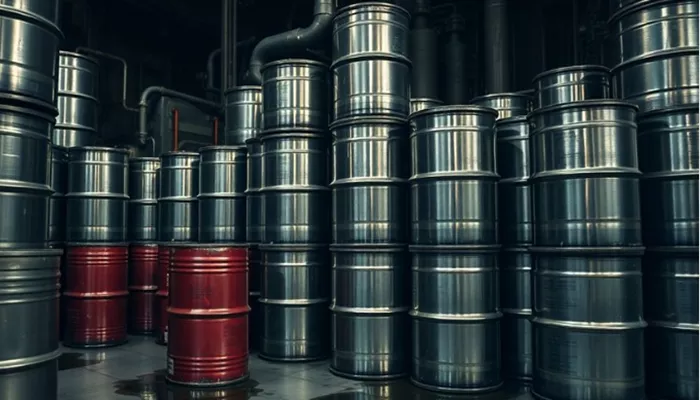Oil prices continued their downward trend for a second consecutive day on Tuesday, with analysts linking the drop to the implications of former President Trump’s “Drill, Baby, Drill” policies on the oil market. On Monday, Trump signed an executive order repealing previous restrictions on oil drilling in the Arctic and large offshore areas, as well as a 2023 directive that barred drilling across 16 million acres in the Arctic. However, despite these efforts, industry experts suggest that significant barriers remain to incentivizing oil companies to expand production.
Decline in U.S. Oil Drilling Activity
The latest Baker Hughes survey shows that U.S. oil drilling has fallen sharply, with active rigs declining by two in the past week to 478—the lowest level since the early days of the COVID-19 pandemic, save for one rig. This marks a significant drop of 149 rigs from the post-pandemic high in November 2002 and 73 rigs fewer than when Trump first assumed office in 2017.
The downward trend in rig activity reflects conservative strategies by oil companies, who have focused on productivity gains to maintain output with fewer rigs. Standard Chartered economists project that drilling activity will remain subdued in 2025 due to low real-term oil prices and escalating production costs.
Challenges in Increasing Production
Falling profitability continues to hinder U.S. oil production expansion. Two years ago, the Biden administration encouraged companies to boost production to alleviate high fuel prices, which were then hovering near $100 per barrel. Despite record profits at the time, 2024 saw a steep decline in non-OPEC+ supply growth, from 2.46 million barrels per day (mb/d) in 2023 to just 0.79 mb/d in 2024.
U.S. liquids production growth, a key component of supply, also slowed dramatically, dropping from 1.605 mb/d in 2023 to 734,000 barrels per day (kb/d) in 2024. Standard Chartered forecasts this trend to continue, with growth declining to 367 kb/d in 2025 and a further slowdown to 151 kb/d by 2026.
Financial Constraints on Oil Majors
The financial strain on major oil companies has grown as shareholder demands persist. Over the past five years, oil and gas companies have prioritized returning profits to investors through dividends and share buybacks. Amid falling oil prices, many companies have resorted to borrowing to meet these obligations.
A Bloomberg analysis revealed that ExxonMobil, Chevron, TotalEnergies, and BP collectively borrowed $15 billion between July and September to fund buybacks. Bloomberg noted that such borrowing is common in the industry, but with oil prices expected to remain subdued, these cash shortfalls are likely to persist.
Evolving U.S. Shale Production Dynamics
Structural shifts in U.S. shale oil production further complicate efforts to ramp up supply. According to Standard Chartered, U.S. crude output reached a record 13.40 mb/d in August 2024, slightly surpassing the previous peak of 13.31 mb/d in December 2023. However, this growth translates to an average increase of just 80 kb/d annually since November 2019, reflecting slower expansion rates.
The shale industry has moved away from aggressive drilling practices, adopting strict capital discipline and focusing on shareholder returns. Consolidation through mergers and acquisitions has reshaped the sector, reducing the number of operating companies and enabling more efficient drilling techniques. Multi-pad wells with long lateral sections have optimized resource extraction while reducing the need for additional rigs.
Geological and Technical Constraints
Goldman Sachs shares a similar outlook, emphasizing the role of technological and efficiency improvements in maintaining production growth since 2020. However, the bank warns that the Permian Basin, the heart of U.S. shale production, is maturing, with declining geological quality likely to impact future output.
The Permian rig count has already dropped by nearly 15% from its April 2023 high to 309 rigs, significantly below its 2018-2019 average. Goldman Sachs predicts that the count will dip below 300 by the end of 2025, underscoring the challenges of sustaining long-term production growth.
Outlook Remains Subdued
Despite policy efforts to stimulate U.S. oil production, significant hurdles persist, including financial constraints, cost inflation, and geological challenges. Analysts suggest that without higher oil prices and structural changes, the industry’s ability to ramp up production will remain limited, keeping rig activity and output growth subdued in the coming years.

